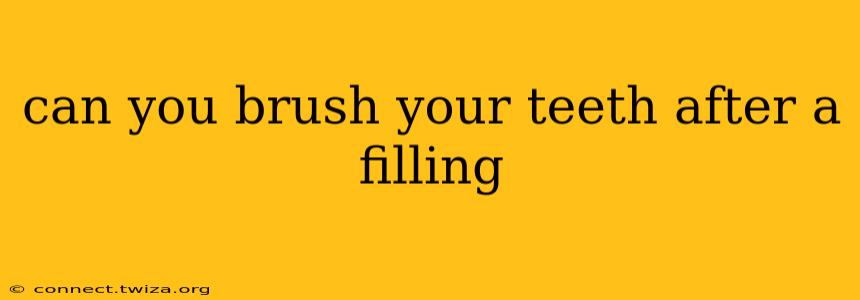Can You Brush Your Teeth After a Filling?
Getting a dental filling is a common procedure, and afterwards, you'll naturally want to know how best to care for your newly repaired tooth. One of the most frequently asked questions is: Can you brush your teeth after a filling? The short answer is yes, but with caution. The way you brush and when you start brushing are key factors in ensuring a successful healing process.
When Can I Brush My Teeth After a Filling?
This depends largely on the type of filling and the specific instructions from your dentist. Generally, you can gently brush your teeth a few hours after the procedure. However, avoid brushing directly on the filling site for at least 24 hours. This allows the filling material to properly set and bond with your tooth. Your dentist will give you personalized advice depending on your situation. Some fillings require longer periods of time before brushing near the affected area.
How Should I Brush My Teeth After a Filling?
Gentle brushing is crucial, especially in the initial days following your filling. Use a soft-bristled toothbrush and employ gentle, circular motions. Avoid harsh scrubbing or excessive pressure, which could irritate the area or dislodge the filling. Focus on cleaning the surrounding teeth thoroughly.
What if My Filling Feels Sensitive After Brushing?
Sensitivity after a filling is quite common, especially initially. This sensitivity typically subsides after a few days. If the sensitivity persists or worsens, contact your dentist immediately. This could indicate a problem with the filling or an underlying issue.
What Type of Toothpaste Should I Use After a Filling?
A fluoride toothpaste is generally recommended for maintaining good oral hygiene. However, if you experience sensitivity, you might consider using a desensitizing toothpaste for a short period to alleviate discomfort. Again, consult your dentist for their recommendation on the best toothpaste for your specific needs.
Can I Use Mouthwash After a Filling?
Similar to brushing, avoid using mouthwash directly on the filling for at least 24 hours. After this time, you can generally use a mouthwash, but choose an alcohol-free variety to avoid irritation. Alcohol-based mouthwashes can dry out the mouth and potentially exacerbate any sensitivity.
What are the Long-Term Oral Hygiene Practices After a Filling?
Maintaining good oral hygiene is crucial for the long-term health of your teeth and your filling. Continue to brush twice daily with a soft-bristled toothbrush and fluoride toothpaste. Floss daily to remove food particles and plaque from between your teeth. Regular dental checkups and cleanings are also essential.
By following these guidelines and paying close attention to your dentist's instructions, you can ensure your new filling lasts for years to come and maintain optimal oral health. Remember, consistency is key to preventing future cavities and maintaining a healthy, bright smile.
